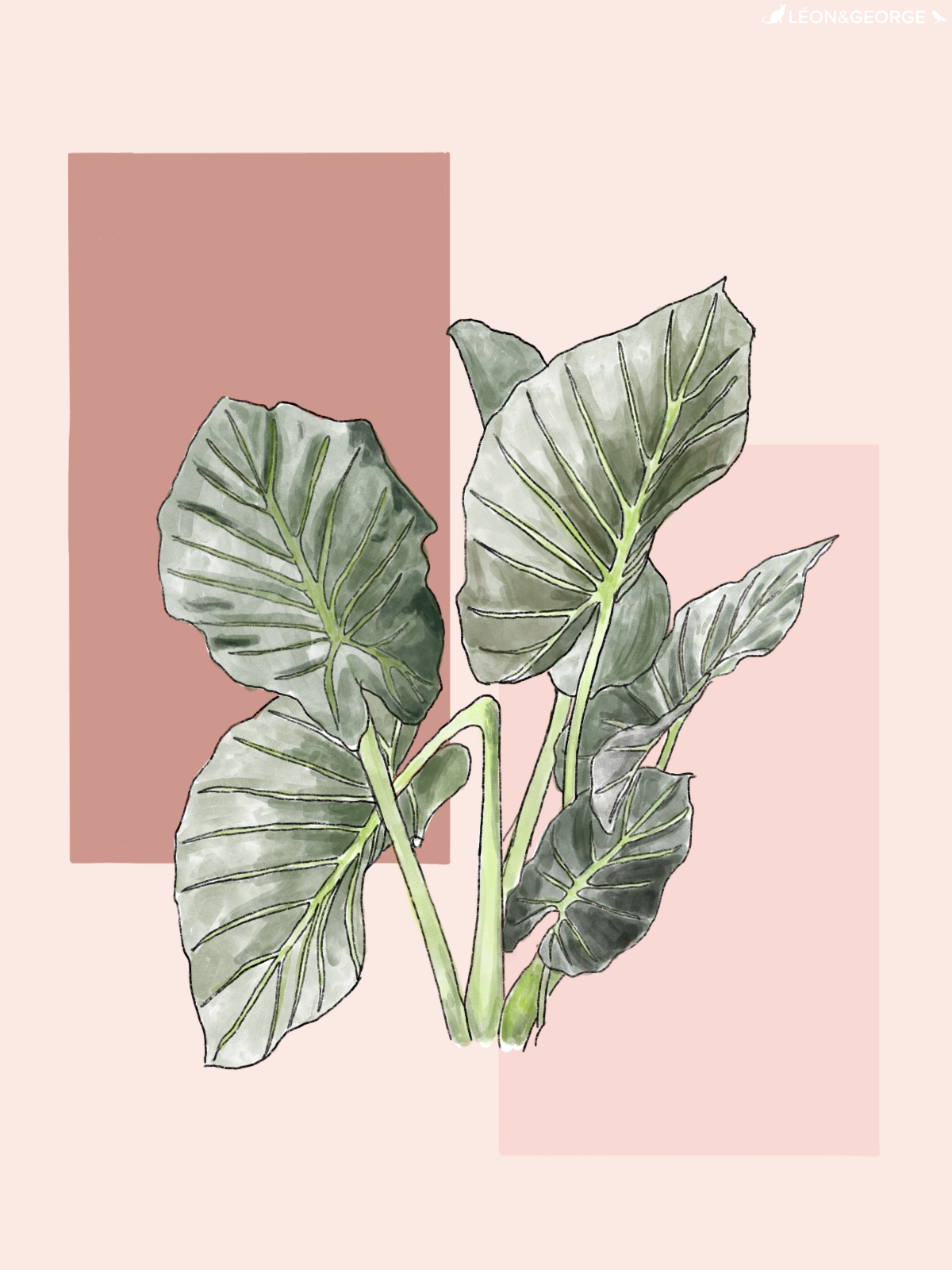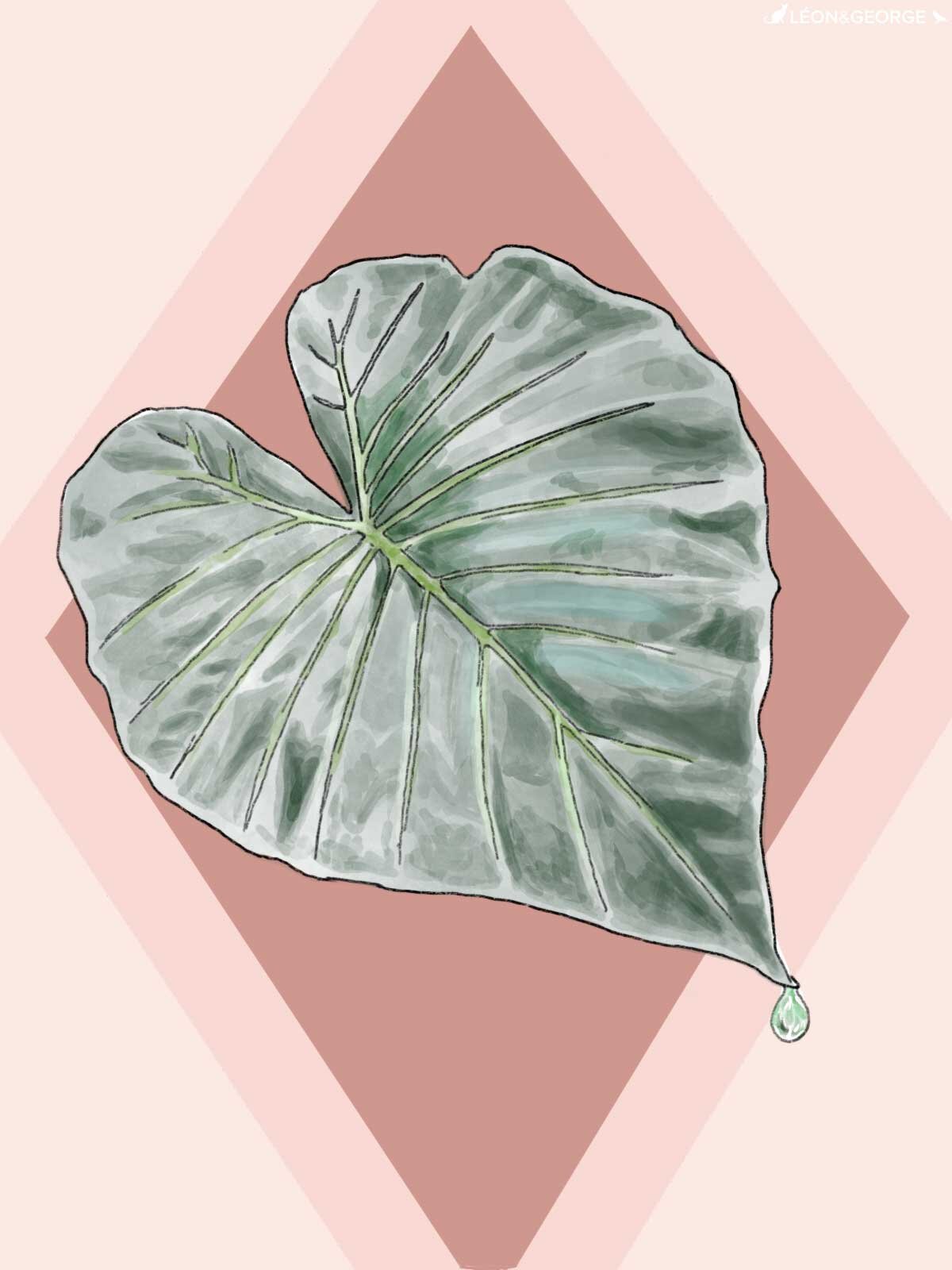How to Care For and Grow Your Elephant Ear
The Elephant Ear
AKA alocasia regal shield
A stunning plant with large heart-shaped leaves and wavy edges, it’s easy to see where the Elephant Ear got its common name. It is part of the alocasia family, so that is the other name you may hear it called. Here’s everything you need to know to keep this beautiful plant healthy and growing over time.
Elephant Ear Light Requirements
This plant prefers bright indirect light, near a south or north facing window is best. Avoid harsh direct sunlight that may burn your plant’s leaves. Rotate plant monthly for balanced growth
How to water the Elephant Ear
Water your plant about once a week to keep soil evenly moist but never soggy. Mist between waterings to provide humidity.
How fast do Elephant Ears Grow
In prime conditions, the Elephant Ear grows relatively fast and can reach up to two feet in height. Fertilize your Elephant Ear 1-2 times per month in the spring and summer with indoor plant food, or foliar feed year round.
Common problems with an Elephant Ear plant
Yellowing edges - light to water ratio imbalance
Symptom - edges of the large leaves are turning yellow
Cause - unhappy with its light/water balance
Remedy - do small weekly tests of giving more or less light OR more or less water. Test one adjustment at a time until yellowing has stopped.
Dark Spots - overwatering
Symptom - dark brown or black spots on the leaves, surrounded by a yellowish rim
Cause - the soil has been drenched and caused a fungal disease, typically this is due to overwatering or not enough air circulation around the plant
Remedy - remove damaged leaf or cut off diseased areas and spray with a fungicide. Optionally, mix 1 tablespoon of baking soda, 1 teaspoon of mineral oil and 2-3 cups of water in a spray bottle, shake well and spray plant evenly.
Droopy leaves - underwatering
Symptom - leaves drooping and bending backwards
Cause - underwatering
Remedy - give your plant a thorough shower, allowing all the roots to have a chance to drink and refresh. Wait until water has drained before returning to decorative pot.
How to maintain a beautiful and healthy Elephant Ear plant
Take care of your Elephant Ear and it will take care of you! Below are simple tips to continue caring for and growing your Elephant Ear over time.
Pruning
The voluptuous leaves will droop as they age. You can safely trim these off with a clean blade, this will give your plant more energy to grow new leaves!
Trimming
If there is just a small portion of a leaf that was damaged such as the edges, trim off any discoloration or blemishes by following the natural lines and shape of the leaf.
Cleaning
Regularly remove dust to ensure your plant can soak in as much light as possible. Use a damp cloth and gently wipe the leaf clean while supporting the under side with your other hand.
How to grow and repot an Elephant’ Ear plant
Growing - in prime conditions with the right light/water/temperature balance, Elephant Ear plants are fast growers. After some time, if you don’t see any new growth, consider adjusting one of its elements. During spring and summer, use a diluted fertilizer to give your plant a vitamin boost.
Repotting - Léon & George’s Elephant Ears plants come in 10” or 12” grow pots and only need to be repotted every few years if you notice the roots outgrowing the pot, or to refresh the soil and give it new nutrients. If you’d like your plant to grow larger, find a new grow pot that is 2” larger than its current pot. If you’re happy with the current size, you can reuse the same pot and simply change the soil.
Getting your hands dirty with or without a yard - spread out newspaper on the floor, remove the plant from the pot and shake off as much of the old soil as possible so that you have clean roots. At the bottom of the grow pot, and a layer of soil, then place the plant in the center of the pot and cover with new soil. Pat down firmly and water thoroughly. Place the plant in an area with bright indirect light. Your plant will take 2-4 weeks to settle from the shock and adjust to its new home.
How to propagate an Elephant Ear plant
Propagating an Elephant Ear plant is best done through division and during spring or summer.
Divide the roots - remove the plant from its container and determine which area you will divide to create new plants. Make sure there is at least one bud in each clump of tubers, aka their roots. Carefully untangle the roots and pull apart with your hands or cut through with a clean sharp knife.
Place in fresh soil - Place the new divisions in fresh soil, press soil firmly and water thoroughly.
Stabilize - Keep freshly repotted plants in a warm area with bright indirect light, and for Elephant Ears the soil should be kept moist thought not drenched.
Illustrations by our talented plant stylist, Kailie Barnes.
Indoor plants, potted & delivered
Premium plants paired with stylish ceramics, plus lifetime plant care support. Order online at leonandgeorge.com




